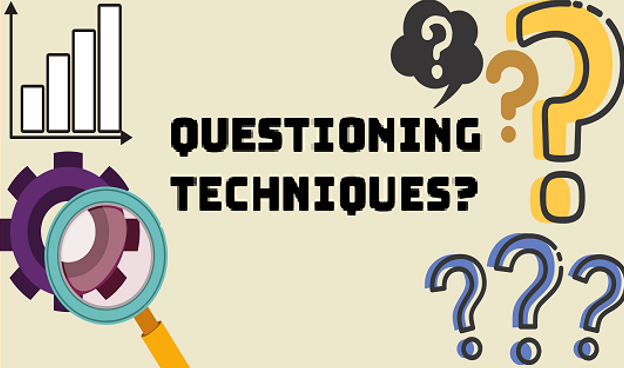Questioning Techniques
Asking the right questions is the next stage in the process of building rapport with the customer. There are many different types of questions that can be used to get information from people, here we will just focus on the main types that will help you to meet the customers’ needs when selling to them, concentrating on ‘open’ and ‘closed’ questioning techniques.
Open questions
Open questions start with what, why, when, how, where and who. They are called open questions because they encourage people to speak, be open and give information; they cannot be answered with, ‘yes’ or, ‘no’.
Here are some examples of open questions:
- How can I help you?
- What can I help you with?
- Why didn’t you like it?
- When does it happen?
- Where are you feeling pain?
- Who is this medicine for?
By looking at these questions you can see that they would have to be answered in more than a single word. Here’s an example in conversation:
“What happens when you put in the eye drops Mrs Smith?”
Mrs Smith will give you a lot of information in her reply.
These examples of open questions are similar to those used in the WWHAM process but should not be used to replace it.
The WWHAM questions form a questioning technique to help pharmacy staff ensure they gain the required information to enable them to make an informed recommendation, to identify if medicines are appropriate, or if the customer requires referring to the pharmacist.
WWHAM stands for:
- Who is the medicine for?
- What are the symptoms?
- How long have the symptoms been present?
- What Action has already been taken?
- Are they taking any other Medication?
To find out how to use this technique effectively refer to the Counter Excellence The Medicines Sales Protocol.
The best words to start open questions are what and how, because they make people think about the facts and how they feel without feeling threatened. ‘Why’ can be used if you need to delve a little deeper, but should be used with caution and very gently because it can make people feel as though they have to justify themselves. If we make our customers feel that way, they are unlikely to trust us and it would be difficult to build rapport or a lasting relationship. Think about asking a customer who didn’t finish their course of treatment, ‘Why didn’t you finish the course?’ which could sound accusing, compared to, ‘What was it that prevented you finishing the course?’ When asking someone questions you are not meant to be interrogating them, you are trying to understand their needs and find out the best way of helping.
Asking open questions helps to build rapport because it gives the customer the opportunity to talk about themselves, and while they are doing that you are able to pick up clues regarding what is important to them about their purchase. This will help you to sell them the most appropriate product for their needs.
Once you have asked an open question, you need to give the other person time to think and formulate their answer. Initially the customer should be doing most of the talking explaining their situation or needs and you will be actively listening. If you are doing most of the talking at this stage you probably are not asking the right questions or listening effectively. Once you have gathered all of the information you need you can offer advice or assistance with product choice, which will involve you doing more of the talking and the customer listening, but make sure you leave time for the customer to ask any questions that they may have!
Closed questions
Closed questions can only be responded to with a one word answer – ‘yes’ or ‘no’. Whilst this is not good for obtaining general information, it is a good technique to use when you need very specific information or want to clarify something.
Examples could be:
- You said the pain is worse at night?
- Do you want this one?
- Does it hurt?
Closed questions are also good if you have a customer who is likely to give you far too much information, but be extremely careful that you don’t miss anything; too much information is better than not enough.
Remember!
We all prefer to buy from someone who is good at understanding our needs and takes time to do so, treating us with respect and empathy.

